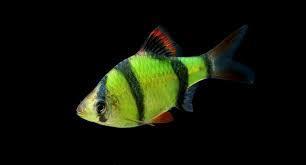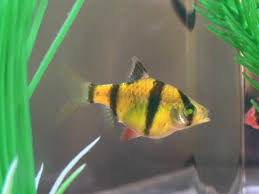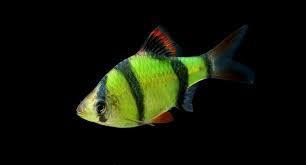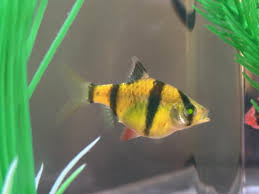GMO Tiger barb
GMO Tiger barb
check_circle Fast Shipping
check_circle Quality Products
check_circle Affordable Price
Reach out to us on ''available to order'' items via WhatsApp or email
12 in stock
Couldn't load pickup availability

GMO Tiger barb
package_2
Product Description
Product Description
All our fish, shrimp and corals are bagged with fresh oxygen as well as a heat pack in winter.
When ordering livestock please select the box size and add it to your cart for accurate overnight (1-2 days) shipping costs. A small box can take 1-2 bags and a medium box 6 bags. One bag fits max 10 small (1-3cm) fish or max 2 medium (3-5cm) fish or max 1 large (>5cm) fish.
ONE SPECIES PER BAG. Eg: One bag of 10 neon tetra.
GMO Tiger Barb (Genetically Modified Tiger Barb)
Description:
-
Appearance:
- Body: Small and robust with a torpedo-shaped body. The GMO Tiger Barb is a genetically modified version of the natural Tiger Barb with altered coloration or patterns.
- Color: Typically features enhanced or fluorescent colors not found in wild-type Tiger Barbs. Common colors include bright neon shades or intensified orange and black stripes. Some strains may exhibit glowing effects.
- Size: Generally reaches about 2.5-3 inches (6-8 cm) in length.
-
Behavior:
- Activity: Very active and lively. They are known for their energetic swimming and playful nature.
- Social Structure: Social fish that thrive in schools. They can be somewhat nippy, particularly if kept in smaller groups or with other species.
Care Requirements:
-
Tank Size:
- Minimum of 20 gallons (76 liters). A larger tank is preferable to accommodate their schooling behavior and to reduce territorial disputes.
-
Water Parameters:
- Temperature: 73-81°F (23-27°C). They prefer a warm environment.
- pH: 6.0-7.5. They thrive in slightly acidic to neutral water conditions.
- Hardness: Soft to moderately hard water. They adapt to a range of hardness levels but do best in moderate hardness.
- Filtration: Good filtration is necessary due to their active nature. Ensure the tank has efficient filtration with moderate water flow to simulate their natural habitat.
-
Tank Setup:
- Substrate: Soft gravel or sand. A smooth substrate is preferable as Tiger Barbs like to dig and forage.
- Aquascaping: Provide some decor and hiding spots using rocks, driftwood, and plants. Create open swimming spaces as they are very active and need room to swim.
- Lighting: Moderate lighting is suitable. They do not have specific lighting needs but should have a regular light/dark cycle.
-
Diet:
- Primary Food: Omnivorous; feed a varied diet including high-quality flakes, pellets, and live or frozen foods such as brine shrimp, bloodworms, and daphnia.
- Supplemental Food: Offer occasional treats like chopped vegetables or algae wafers to provide dietary variety.
-
Behavioral Considerations:
- Compatibility: Best kept with other active and robust fish. Avoid slow-moving or delicate species that may become targets of nipping. They are compatible with other barbs and many community tank species.
- Social Behavior: Keep in schools of at least six to reduce stress and prevent excessive nipping. Larger groups help distribute their aggression and encourage natural schooling behavior.
-
Tank Maintenance:
- Water Changes: Regular water changes (20-30% weekly) are essential to maintain water quality and manage the bioload.
- Cleaning: Clean the tank regularly and remove any uneaten food or waste. Ensure the filtration system is effective and not causing excessive water movement.
-
Health Care:
- Observation: Monitor for signs of stress or illness, such as changes in behavior, loss of appetite, or visible symptoms like fin deterioration or discoloration.
- Treatment: Maintain optimal water conditions and consult an aquarium professional if health issues arise. Address any signs of disease or stress promptly to ensure the well-being of your GMO Tiger Barb.






